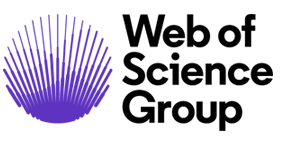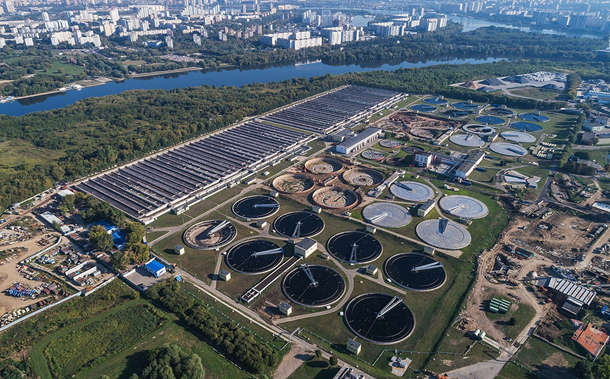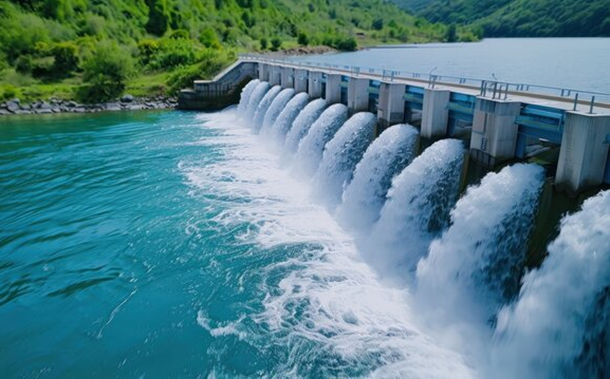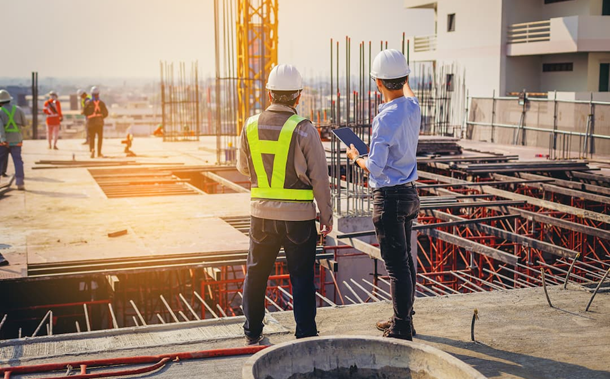Predictive Models to Evaluate the Interaction Effect of Soil-Tunnel Interaction Parameters on Surface and Subsurface Settlement
Downloads
Doi:10.28991/CEJ-2022-08-11-05
Full Text:PDF
Downloads
[2] Groensfelder, T., Giebeler, F., Geupel, M., Schneider, D., & Jaeger, R. (2020). Application of machine learning procedures for mechanical system modelling: capabilities and caveats to prediction-accuracy. Advanced Modeling and Simulation in Engineering Sciences, 7(1). doi:10.1186/s40323-020-00163-4.
[3] Ghiasi, V., & Koushki, M. (2020). Numerical and artificial neural network analyses of ground surface settlement of tunnel in saturated soil. SN Applied Sciences, 2(5), 1–14,. doi:10.1007/s42452-020-2742-z.
[4] Sheil, B. B., Suryasentana, S. K., Mooney, M. A., Zhu, H., McCabe, B. A., & O'Dwyer, K. G. (2020). Discussion: Machine learning to inform tunnelling operations: recent advances and future trends. Proceedings of the Institution of Civil Engineers - Smart Infrastructure and Construction, 173(1), 180–181. doi:10.1680/jsmic.2020.173.1.180.
[5] Sakurai, S., Akutagawa, S., Takeuchi, K., Shinji, M., & Shimizu, N. (2003). Back analysis for tunnel engineering as a modern observational method. Tunnelling and Underground Space Technology, 18(2–3), 185–196. doi:10.1016/s0886-7798(03)00026-9.
[6] Huang, Z., Argyroudis, S. A., Pitilakis, K., Zhang, D., & Tsinidis, G. (2022). Fragility assessment of tunnels in soft soils using artificial neural networks. Underground Space (China), 7(2), 242–253. doi:10.1016/j.undsp.2021.07.007.
[7] Ding, Z., Zhao, L.-S., Zhou, W.-H., & Bezuijen, A. (2022). Intelligent Prediction of Multi-Factor-Oriented Ground Settlement during TBM Tunneling in Soft Soil. Frontiers in Built Environment, 8. doi:10.3389/fbuil.2022.848158.
[8] Chen, C., He, W., Zhou, H., Xue, Y., & Zhu, M. (2020). A comparative study among machine learning and numerical models for simulating groundwater dynamics in the Heihe River Basin, northwestern China. Scientific Reports, 10(1), 1–13. doi:10.1038/s41598-020-60698-9.
[9] Das, S. K., Samui, P., Sabat, A. K., & Sitharam, T. G. (2010). Prediction of swelling pressure of soil using artificial intelligence techniques. Environmental Earth Sciences, 61(2), 393–403. doi:10.1007/s12665-009-0352-6.
[10] Avci, O., Bhargava, A., Nikitas, N., & Inman, D. J. (2020). Vibration annoyance assessment of train induced excitations from tunnels embedded in rock. Science of the Total Environment, 711, 134528. doi:10.1016/j.scitotenv.2019.134528.
[11] Benardos, A. G., & Kaliampakos, D. C. (2004). Modelling TBM performance with artificial neural networks. Tunnelling and Underground Space Technology, 19(6), 597–605. doi:10.1016/j.tust.2004.02.128.
[12] Suwansawat, S., & Einstein, H. H. (2006). Artificial neural networks for predicting the maximum surface settlement caused by EPB shield tunneling. Tunnelling and Underground Space Technology, 21(2), 133–150. doi:10.1016/j.tust.2005.06.007.
[13] Boubou, R., Emeriault, F., & Kastner, R. (2010). Artificial neural network application for the prediction of ground surface movements induced by shield tunnelling. Canadian Geotechnical Journal, 47(11), 1214–1233. doi:10.1139/T10-023.
[14] Boubou, R., Emeriault, F., & Kastner, R. (2012). Prediction of surface settlements induced by TBM using Artificial Neural Networks method. Geotechnical Aspects of Underground Construction in Soft Ground, 791–797. doi:10.1201/b12748-106.
[15] Torabi, S. R., Shirazi, H., Hajali, H., & Monjezi, M. (2013). Study of the influence of geotechnical parameters on the TBM performance in Tehran-Shomal highway project using ANN and SPSS. Arabian Journal of Geosciences, 6(4), 1215–1227. doi:10.1007/s12517-011-0415-3.
[16] Khatami, S. A., Mirhabibi, A., Khosravi, A., & Nahavandi, S. (2013). Artificial Neural Network Analysis of Twin Tunnelling-Induced Ground Settlements. 2013 IEEE International Conference on Systems, Man, and Cybernetics. doi:10.1109/smc.2013.425.
[17] Mohammadi, S. D., Naseri, F., & Alipoor, S. (2015). Development of artificial neural networks and multiple regression models for the NATM tunnelling-induced settlement in Niayesh subway tunnel, Tehran. Bulletin of Engineering Geology and the Environment, 74(3), 827–843. doi:10.1007/s10064-014-0660-2.
[18] Chen, R. P., Zhang, P., Kang, X., Zhong, Z. Q., Liu, Y., & Wu, H. N. (2019). Prediction of maximum surface settlement caused by earth pressure balance (EPB) shield tunneling with ANN methods. Soils and Foundations, 59(2), 284–295. doi:10.1016/j.sandf.2018.11.005.
[19] Khalili, A., Ahangari, K., Ghaemi, M., & Zarei, H. (2018). Introducing a new criterion for tunnel crown settlement: a case study of Chehel-Chay water conveyance tunnel. International Journal of Geotechnical Engineering, 12(3), 217–227. doi:10.1080/19386362.2016.1264680.
[20] Moghaddasi, M. R., & Noorian-Bidgoli, M. (2018). ICA-ANN, ANN and multiple regression models for prediction of surface settlement caused by tunneling. Tunnelling and Underground Space Technology, 79, 197–209. doi:10.1016/j.tust.2018.04.016.
[21] Habibagahi, G., & Bamdad, A. (2003). A neural network framework for mechanical behavior of unsaturated soils. Canadian Geotechnical Journal, 40(3), 684–693. doi:10.1139/t03-004.
[22] Shreyas, S. K., & Dey, A. (2019). Application of soft computing techniques in tunnelling and underground excavations: state of the art and future prospects. Innovative Infrastructure Solutions, 4(1), 1-15. doi:10.1007/s41062-019-0234-z.
[23] Neaupane, K. M., & Adhikari, N. R. (2006). Prediction of tunneling-induced ground movement with the multi-layer perceptron. Tunnelling and Underground Space Technology, 21(2), 151–159. doi:10.1016/j.tust.2005.07.001.
[24] Attah, I. C., & Etim, R. K. (2020). Experimental investigation on the effects of elevated temperature on geotechnical behaviour of tropical residual soils. SN Applied Sciences, 2(3), 1–16,. doi:10.1007/s42452-020-2149-x.
[25] Wan, S. P. (2014). Field monitoring of ground response to EPBM tunnelling close to existing tunnels in London Clay. Ph.D. Thesis, Department of Civil & Environmental Engineering, Imperial College London, London, United Kingdom. doi:10.25560/42249.
[26] Standing, J. R., & Selemetas, D. (2013). Greenfield ground response to EPBM tunnelling in London Clay. Géotechnique, 63(12), 989-1007. doi:10.1680/geot.12.P.154.
[27] Wan, M. S. P., & Standing, J. R. (2014). Lessons learnt from installation of field instrumentation. Proceedings of the Institution of Civil Engineers: Geotechnical Engineering, 167(5), 491–506. doi:10.1680/geng.13.00054.
[28] DE Freitas, M. H., & Mannion, W. G. (2011). A biostratigraphy for the London Clay in London. Stiff Sedimentary Clays, 27–35. Thomas Telford Limited, London, United Kingdom. doi:10.1680/ssc.41080.0003.
[29] Hight, D. W., McMillan, F., Powell, J. J. M., Jardine, R. J., & Allenou, C. P. (2003). Some characteristics of London clay. Characterisation and Engineering Properties of Natural Soils, 2(October), 851–907.
[30] Gasparre, A. (2005). Advanced laboratory characterisation of London Clay. Ph.D. Thesis, Imperial College London, London, United Kingdom.
[31] Gong, C., Ding, W., & Xie, D. (2020). Twin EPB tunneling-induced deformation and assessment of a historical masonry building on Shanghai soft clay. Tunnelling and Underground Space Technology, 98. doi:10.1016/j.tust.2020.103300.
[32] Nishimura, S., Minh, N. A., & Jardine, R. J. (2007). Shear strength anisotropy of natural London Clay. Geotechnique, 57(1), 49–62. doi:10.1680/geot.2007.57.1.49.
[33] Wongsaroj, J., Soga, K., Yimsiri, S., & Mair, R. J. (2004). Stiffness anisotropy of London Clay and its modelling: Laboratory and Field. Advances in geotechnical engineering: The Skempton conference: Proceedings of a three-day conference on advances in geotechnical engineering, organised by the Institution of Civil Engineers and held at the Royal Geographical Society, Thomas Telford Publishing, 29–31 March, 2004, London, United Kingdom.
[34] Gasparre, A., Nishimura, S., Minh, N. A., Coop, M. R., & Jardine, R. J. (2007). The stiffness of natural London Clay. Geotechnique, 57(1), 33–47. doi:10.1680/geot.2007.57.1.33.
[35] Hight, D. W., Gasparre, A., Nishimura, S., Jardine, R. J., Coop, M. R., & Minh, N. A. (2011). Characteristics of the London Clay from the Terminal 5 site at Heathrow Airport. Stiff Sedimentary Clays, 167–182, Thomas Telford Limited, London, United Kingdom. doi:10.1680/ssc.41080.0016.
[36] Haas, M., Mongeard, L., Ulrici, L., D'Aloí¯a, L., Cherrey, A., Galler, R., & Benedikt, M. (2021). Applicability of excavated rock material: A European technical review implying opportunities for future tunnelling projects. Journal of Cleaner Production, 315, 128049. doi:10.1016/j.jclepro.2021.128049.
[37] Sandström, M. (2016). Numerical Modelling and Sensitivity Analysis of Tunnel Deformations in London Clay. Master Thesis, KTH Royal Institute of Technology, Stockholm, Sweden.
[38] Wang, X., Lu, H., Wei, X., Wei, G., Behbahani, S. S., & Iseley, T. (2020). Application of Artificial Neural Network in Tunnel Engineering: A Systematic Review. IEEE Access, 8, 119527–119543. doi:10.1109/ACCESS.2020.3004995.
[39] Basheer, I. A., & Hajmeer, M. (2000). Artificial neural networks: Fundamentals, computing, design, and application. Journal of Microbiological Methods, 43(1), 3–31. doi:10.1016/S0167-7012(00)00201-3.
[40] Kayri, M. (2016). Predictive abilities of Bayesian regularization and levenberg-marquardt algorithms in artificial neural networks: A comparative empirical study on social data. Mathematical and Computational Applications, 21(2). doi:10.3390/mca21020020.
[41] Doan, C. D., & Liong, S. Y. (2004, July). Generalization for multilayer neural network bayesian regularization or early stopping. Proceedings of Asia Pacific association of hydrology and water resources 2nd conference, 5-8 July, 2004, Singapore.
[42] Burden, F., & Winkler, D. (2008). Bayesian regularization of neural networks. Methods in Molecular Biology, 458, 25–44. doi:10.1007/978-1-60327-101-1_3.
[43] Stangierski, J., Weiss, D., & Kaczmarek, A. (2019). Multiple regression models and Artificial Neural Network (ANN) as prediction tools of changes in overall quality during the storage of spreadable processed Gouda cheese. European Food Research and Technology, 245(11), 2539–2547. doi:10.1007/s00217-019-03369-y.
[44] Zhang, W. G., Li, H. R., Wu, C. Z., Li, Y. Q., Liu, Z. Q., & Liu, H. L. (2021). Soft computing approach for prediction of surface settlement induced by earth pressure balance shield tunneling. Underground Space (China), 6(4), 353–363. doi:10.1016/j.undsp.2019.12.003.
[45] Apley, D. W., & Zhu, J. (2020). Visualizing the effects of predictor variables in black box supervised learning models. Journal of the Royal Statistical Society. Series B: Statistical Methodology, 82(4), 1059–1086. doi:10.1111/rssb.12377.
[46] Zhao, C., Lavasan, A. A., Hölter, R., & Schanz, T. (2018). Mechanized tunneling induced building settlements and design of optimal monitoring strategies based on sensitivity field. Computers and Geotechnics, 97(January), 246–260. doi:10.1016/j.compgeo.2018.01.007.
[47] Persson, E. (2017). Empirical correlation between undrained shear strength and preconsolidation pressure in Swedish soft clays. Master Thesis, KTH Royal Institute of Technology, Stockholm, Sweden.
[48] Singh, D. K., Aromal, V., & Mandal, A. (2020). Prediction of surface settlements in subway tunnels by regression analysis. International Journal of Geotechnical Engineering, 14(7), 836–842. doi:10.1080/19386362.2018.1477294.
- Authors retain all copyrights. It is noticeable that authors will not be forced to sign any copyright transfer agreements.
- This work (including HTML and PDF Files) is licensed under a Creative Commons Attribution 4.0 International License.![]()














